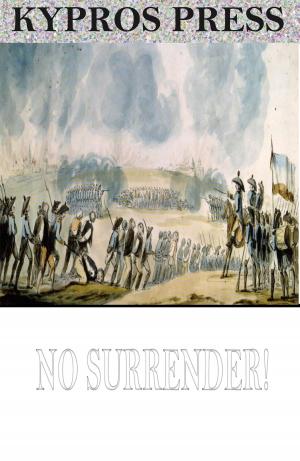| Author: | Julius Caesar | ISBN: | 9781619824836 |
| Publisher: | Charles River Editors | Publication: | January 21, 2012 |
| Imprint: | Language: | English |
| Author: | Julius Caesar |
| ISBN: | 9781619824836 |
| Publisher: | Charles River Editors |
| Publication: | January 21, 2012 |
| Imprint: | |
| Language: | English |
Julius Caesar (100-44 B.C.) is one of the most famous men in history, and his name was used to denote the status of emperor throughout European countries like Italy, Germany, and Russia nearly 2,000 years after his famous assassination. But before he won the civil war against Pompey the Great and ended the Roman Republic permanently, he became a man of power and fame in modern day France, leading armies in the Gallic campaign. Moreover, Caesar wrote extensively about the campaign, giving readers a fantastic primary account of the history of the times. It was after the Gallic campaign that Caesar would eventually lead his legions across the Rubicon and into Italy, starting the civil war that he would ultimately win. Caesar's subsequent African War, part of the Roman Civil War against Pompey, consisted of three operations, centered around Ruspina, Uzita and Thapsus. Initially Caesar took possession of the seaports of Ruspina and Little Leptis, and kept his troops in entrenchments, ready to reembark if attacked by a superior force. Additional ships soon arrived, however, and on the following day he led three legions into the interior to procure supplies. There, he was attacked by Labienus, who had only light troops but nevertheless soon surrounded Caesar's legions. Other enemy forces under Marcus Petreius and Gnaeus Calpurnius Piso soon joined the battle. In addition, Scipio came from the north, Juba from the west. The African Wars, attributed to Caesar but actually written by one of his lieutenants, gives a detailed account of the entire campaign. This edition is specially formatted with a Table of Contents.
Julius Caesar (100-44 B.C.) is one of the most famous men in history, and his name was used to denote the status of emperor throughout European countries like Italy, Germany, and Russia nearly 2,000 years after his famous assassination. But before he won the civil war against Pompey the Great and ended the Roman Republic permanently, he became a man of power and fame in modern day France, leading armies in the Gallic campaign. Moreover, Caesar wrote extensively about the campaign, giving readers a fantastic primary account of the history of the times. It was after the Gallic campaign that Caesar would eventually lead his legions across the Rubicon and into Italy, starting the civil war that he would ultimately win. Caesar's subsequent African War, part of the Roman Civil War against Pompey, consisted of three operations, centered around Ruspina, Uzita and Thapsus. Initially Caesar took possession of the seaports of Ruspina and Little Leptis, and kept his troops in entrenchments, ready to reembark if attacked by a superior force. Additional ships soon arrived, however, and on the following day he led three legions into the interior to procure supplies. There, he was attacked by Labienus, who had only light troops but nevertheless soon surrounded Caesar's legions. Other enemy forces under Marcus Petreius and Gnaeus Calpurnius Piso soon joined the battle. In addition, Scipio came from the north, Juba from the west. The African Wars, attributed to Caesar but actually written by one of his lieutenants, gives a detailed account of the entire campaign. This edition is specially formatted with a Table of Contents.















